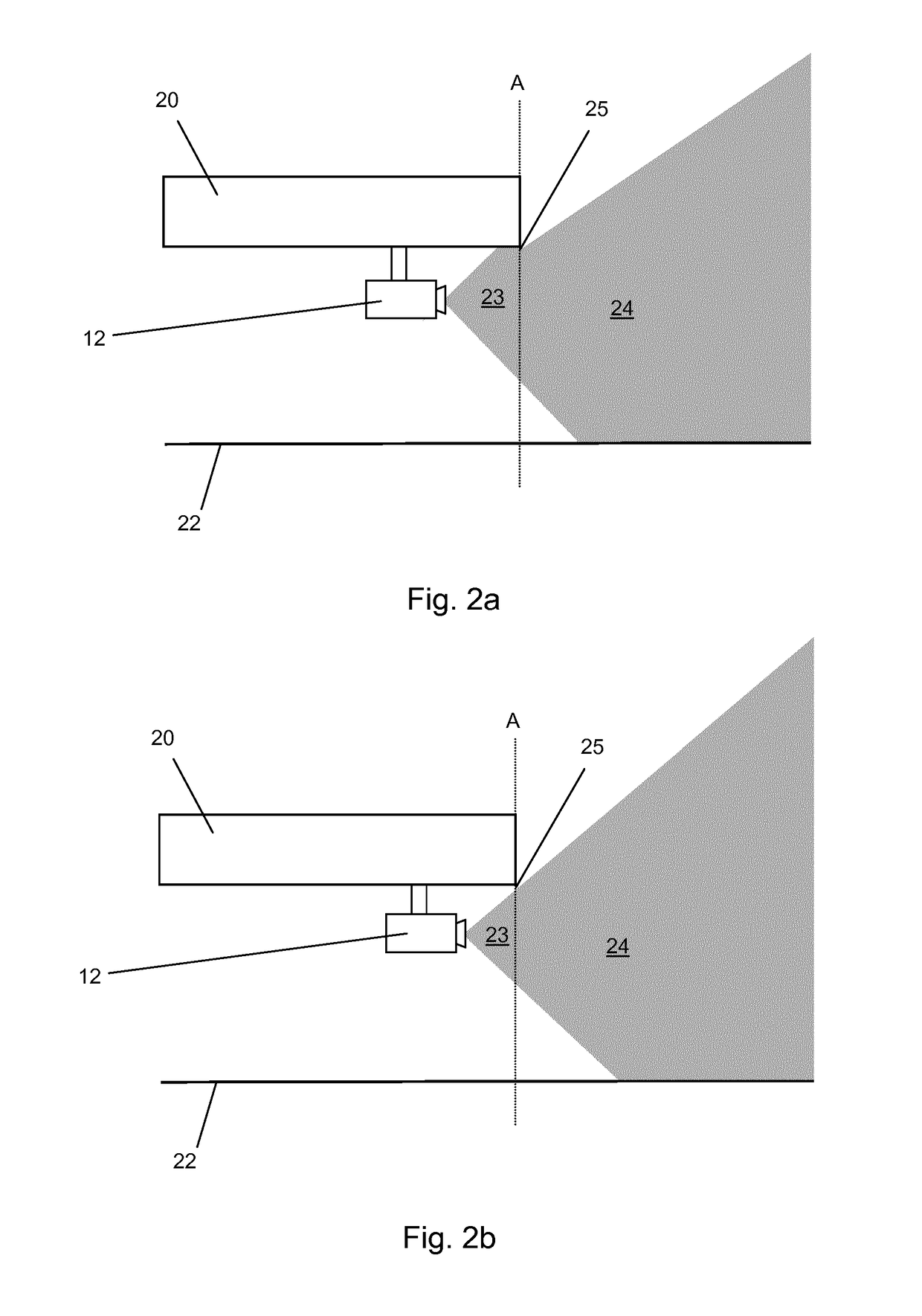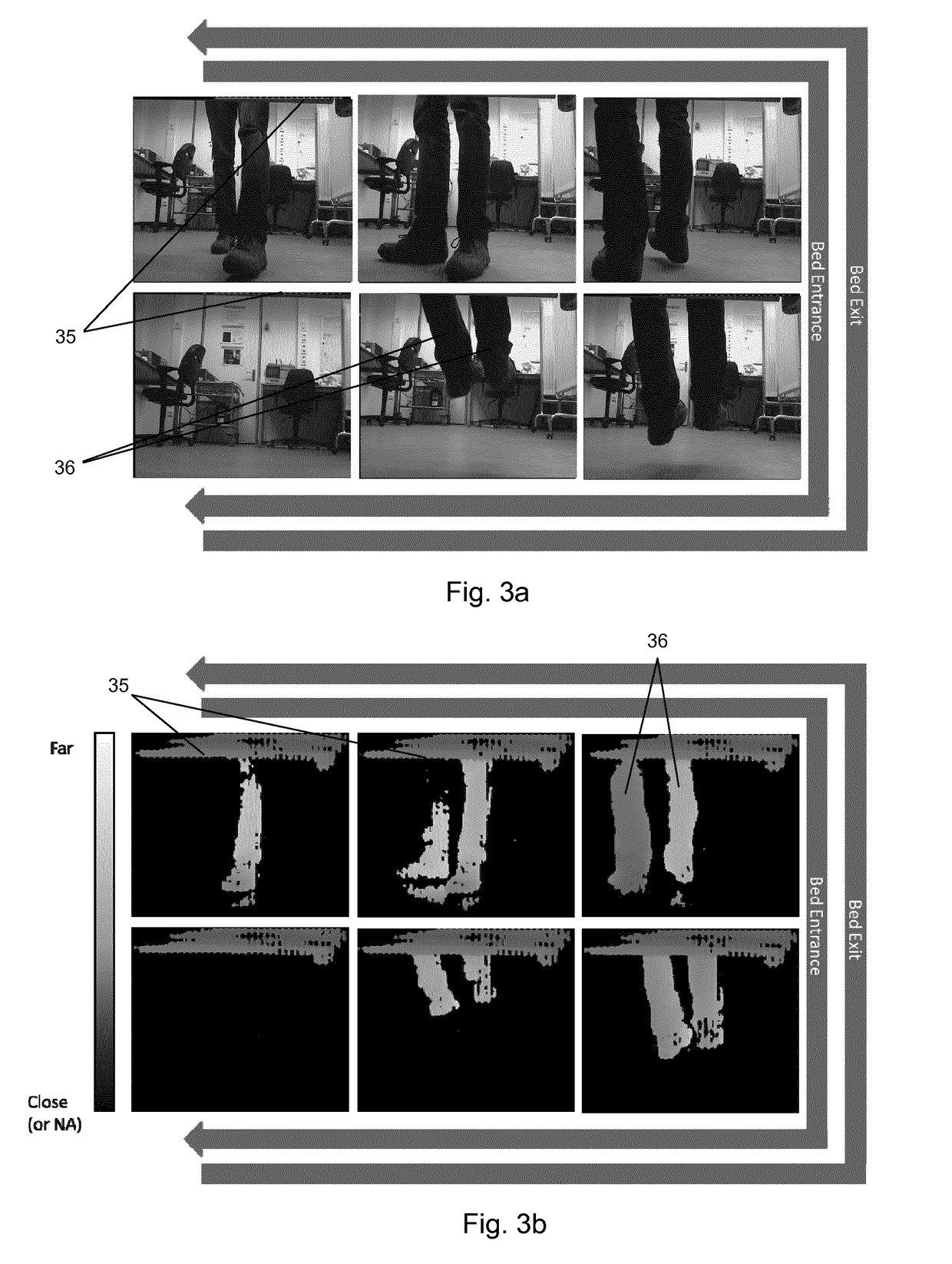Occupancy detection
a technology for detecting occupancies and patients, applied in the field of occupancy detection, can solve the problems of putting a significant burden on hospital staff, dislodging medical devices attached to patients, falling and injuring themselves, etc., and achieves the effect of reducing the monitoring burden on medical staff and less computational resources
- Summary
- Abstract
- Description
- Claims
- Application Information
AI Technical Summary
Benefits of technology
Problems solved by technology
Method used
Image
Examples
Embodiment Construction
[0035]FIG. 1 shows an apparatus 10 for detecting when a subject has exited an item of furniture, according to a general embodiment. The apparatus comprises a light a camera 12 and a processing unit 13.
[0036]The phrase “processing unit” is used herein to refer to an entity or system for processing, for example, those that process in response to a signal or data and / or those that process autonomously. A processing unit should be understood to encompass microprocessors, microcontrollers, programmable digital signal processors, integrated circuits, computer software, computer hardware, electrical circuits, application specific integrated circuits, programmable logic devices, programmable gate arrays, programmable array logic, personal computers, chips, and any other combination of discrete analog, digital, or programmable components, or other devices capable of providing processing functions.
[0037]The camera 12 is configured to be arranged, when in use, below the underside of an item of...
PUM
 Login to View More
Login to View More Abstract
Description
Claims
Application Information
 Login to View More
Login to View More - R&D
- Intellectual Property
- Life Sciences
- Materials
- Tech Scout
- Unparalleled Data Quality
- Higher Quality Content
- 60% Fewer Hallucinations
Browse by: Latest US Patents, China's latest patents, Technical Efficacy Thesaurus, Application Domain, Technology Topic, Popular Technical Reports.
© 2025 PatSnap. All rights reserved.Legal|Privacy policy|Modern Slavery Act Transparency Statement|Sitemap|About US| Contact US: help@patsnap.com



